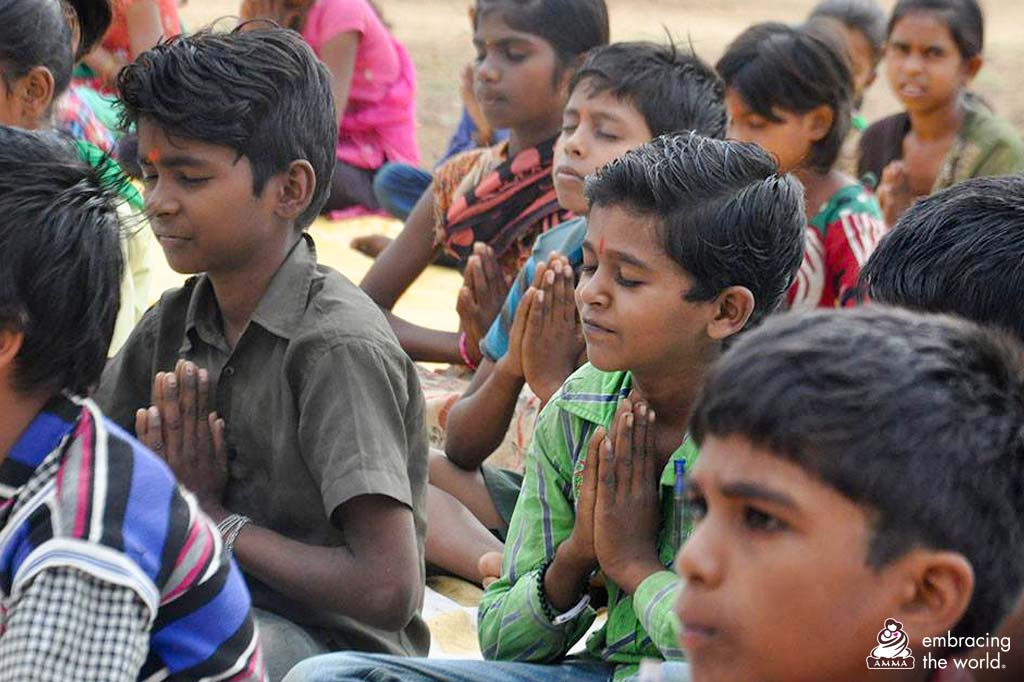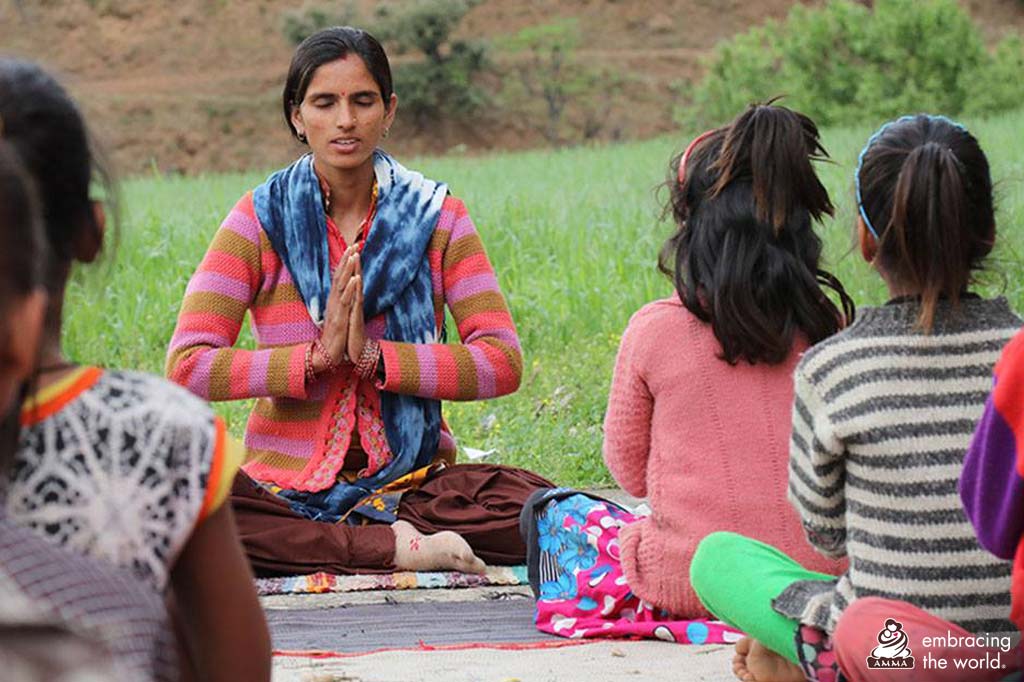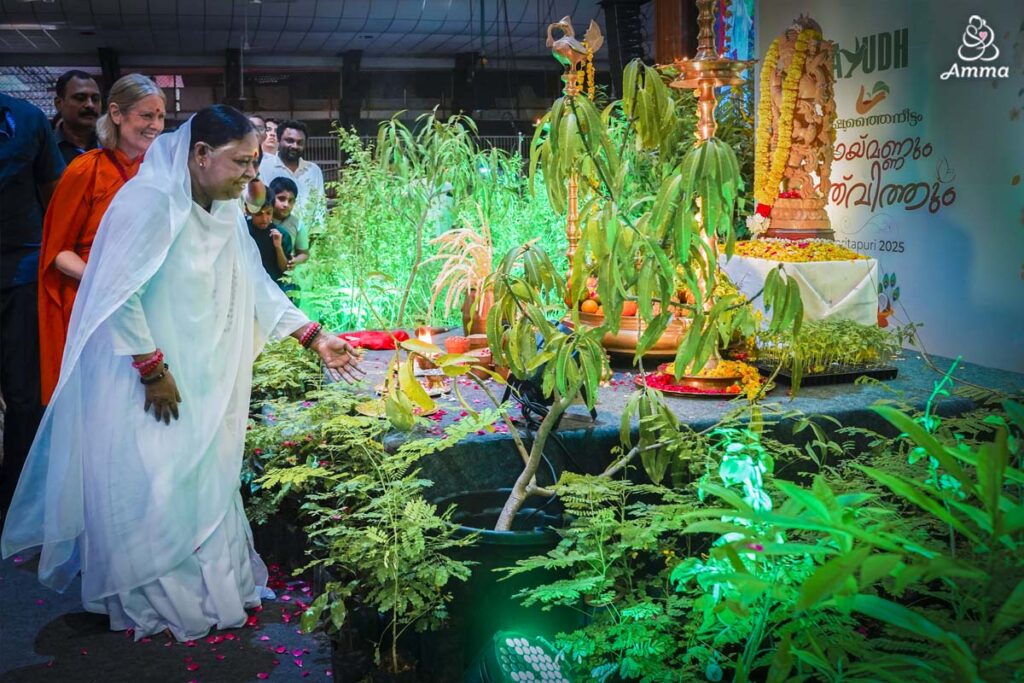People around the world today took part in festivities for the United Nations’ International Yoga Day. Yoga is an ancient physical, mental and spiritual practice that originated in India. The word ‘yoga’ derives from Sanskrit and means to join or to unite, symbolizing the union of body and consciousness. Today it is practised in various forms across the globe and continues to grow in popularity.
Amma wrote a column in the Times of India that emphasizes how yoga ultimately brings us to complete peace, and in her centres worldwide, people gathered for classes to work on finding it. That included Amrita SeRVe’s villages in 21 states across India where more than a thousand people attended events.
In most of Amrita SeRVe’s communities, poverty is a harsh reality for the majority of the population. For some, the question at the start of the day is, “Where will we get our food today? Where will we find clean water to drink?” These are stressful conditions that most around the world have not lived.
Amrita SeRVe began its work in 2013 with seven focus areas: health, water & sanitation, education, agriculture, income generation, eco-friendly infrastructure and self empowerment. Interestingly, yoga acts as a bridge from health, the first basic goal, to self empowerment, a vision for a better future. How?




This was also the first question that came from villagers. For them, yoga class seemed a waste of time. They have their responsibilities, often in this pattern – housework and other chores for the women, work for the men, and studies for the children.
“The way we decided to deal with this aspect was to assure people that they were making a good investment,” explains Gunavati, a yoga instructor with Amrita SeRVe and AYUDH. “Our beginner program is a simple asana sequence that can be completed in 20 to 30 minutes. Time that would be otherwise spent sitting around and chatting or watching TV can be used to improve their mental and physical health.”
Slowly but surely, people started to try it out. Now the emphasis is on AmritaCREATE’s tuition classes with school students. Yoga is included as a way to increase the children’s physical and mental faculties to the point where it can improve their grades.
“Of course, as is natural for children, they have a lot of fun in class as smiles spread across their faces,” says Gunavati. “But the surprising thing is that they attain meditation concentration very easily once they are properly trained on how to focus. Kids are good meditaters.”
Another moving aspect has been to witness how yoga is bringing union to some of the communities. For example, Ratanpur, Bihar is a village which has been historically split via caste differences. The Musahar people are a scheduled caste community that faces deep prejudice, the worst of which is to be called “subhuman”. Amrita SeRVe has made it a priority to inform the Musahars of their rights as citizens and human beings.
First the parents had to be convinced to send their children to school, as they did not feel they were worthy. Next, efforts were made to also have the children attend tuition classes. In the yoga classes, the initial response was for the groups of children to remain separate, but that has changed. Now Musahar children and the others intermingle and actually enjoy learning together.
In the big picture, Amrita SeRVe is seeking to enable villagers to find their real strength from within. In the olden days, the people of India’s villages knew their inner strength and lived in independent communities. If villagers can return to that foundation, they may again achieve true self-reliance.





